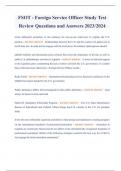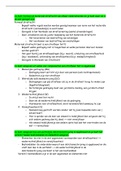Summary
Summary Advanced Immunology Janeway test 4) Mucosal immunity and innate lymphoid cells.
- Course
- Institution
- Book
This is a small summary for the course advanced immunology from the master biomedical sciences at the UvA. It includes all the information you need for one of the 9 Janeway tests during this course. Look out for the bundle, because that's a lot cheaper!
[Show more]













